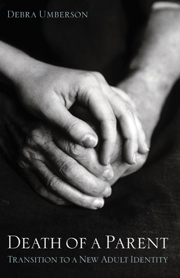Book contents
APPENDIX: DATA AND METHODS
Published online by Cambridge University Press: 30 July 2009
Summary
THE NATIONAL SURVEY
Data
The national data reported in Chapters 2, 5, and 6 are from a two-wave panel survey of individuals, ages twenty-four to ninety-six, in the contiguous United States. This survey, supported by the National Institute on Aging (AGO5562) and conducted by the Survey Research Center of the University of Michigan, was designed to assess issues of health, productivity, and social relationships over the life course. I worked with the original research team at the University of Michigan in formulating questions on family relationships for this national survey. Face-to-face interviews, lasting approximately ninety minutes each, were conducted with individuals in 1986 (N= 3,617) and 1989 (N= 2,867). Between 1986 and 1989, 207 adults in the sample experienced the death of a biological parent. I compared this group of individuals with 1,210 individuals who had at least one living biological parent and had not experienced a parent's death between 1986 and 1989. All individuals in both groups were interviewed in 1986 and 1989. Individuals who did not meet the criteria for inclusion in one of the two groups were excluded from the analyses. This reduced the sample size for analysis to 1,417 for the analyses reported in Chapter 2: 1,407 respondents were excluded because both parents died prior to 1986; thirty were excluded because they experienced the death of a stepparent; and thirteen were excluded because of missing data on the parent's status.
The attrition rate between the 1986 and 1989 interviews was 21 percent (N=750).
- Type
- Chapter
- Information
- Death of a ParentTransition to a New Adult Identity, pp. 221 - 236Publisher: Cambridge University PressPrint publication year: 2003



